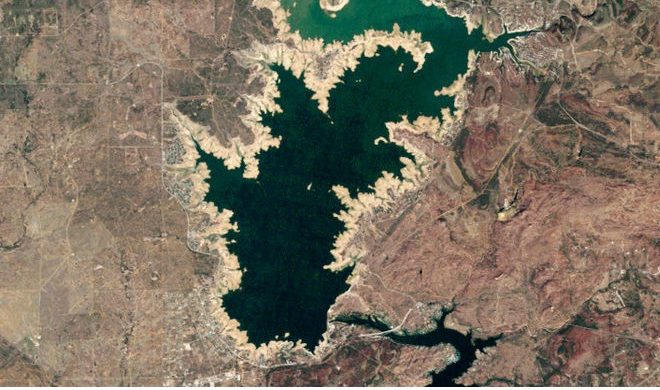Though salt appears everywhere, you may have never seen a salt works. Today, finding salt cheaply and easily is simply a matter of going to your nearest grocery store, but that salt has to come from nature. Salt works extract the salt from water or the ground, and a very important one of these facilities once sat near the Colorado River. Now, that salt works has disappeared beneath the waters of Lake Buchanan, though you can visit the historic marker near the original site, located between Old Bluffton and Tow Valley.
History
CSA Salt Works Hidden Under Lake Buchanan
CSA Salt Works

Photo: Wikimedia Commons
CSA? Yes, the Confederacy ran the salt works under what is today Lake Buchanan. Most humans and animals must have salt to live, and the Confederacy operated the salt works to supply salt to the horses in its cavalry in addition to salt for human consumption. In the days before refrigeration, salting meat preserved it, which made salt for military meat rations a critical part of supplying the troops. Though started before the war by David Cowan, the CSA made use of the facility through the war. It lasted until 1871 when a “salt works cyclone” destroyed the facility.
Origins of the Salt

Photo: Wikimedia Commons
Where did the salt come from? Lake Buchanan is a fresh water lake, and the Gulf of Mexico is hundreds of miles away. How did the salt works procure salt without an ocean? Though no ocean exists today, 500 million years ago, much of Texas was under a shallow sea. At various times throughout history, the sea level rose and fell, depositing layers of salt on the ground. Men later took advantage of these mineral deposits through the salt works. Natives in the area directed white settlers to a salt plain, which remained in use by locals until the salt works was established.
Production Levels

Photo: Wikimedia Commons
At its peak, the CSA salt works produced 20 to 30 bushels each day. To generate this much, workers boiled water in 100 iron kettles, each holding 250 gallons. This salt contributed to supplying Confederate troops throughout the war and to others in the area after the war ended.
References:
The Portal to Texas History: Ledbetter Salt Works


